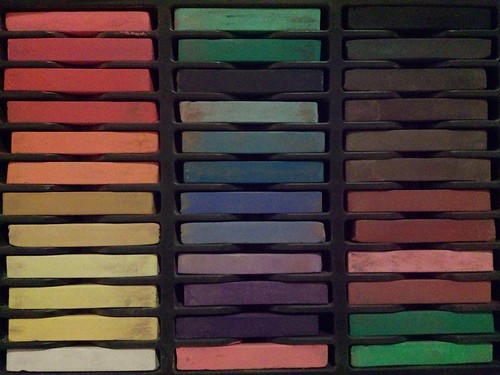Insulin ranges in plasma and pancreatic tissue homogenates have been established employing an Enzyme Connected Immunosorbent Assay (ELISA) package (Nanjing Jiancheng Bioengineering Institute, Nanjing, China). Examination of glycosylated hemoglobin (HbA1c) articles was executed on a hundred ml of fresh complete blood making use of a turbidimetric immunoassay executed with a Hitachi 7080 (Tokyo, Japan) computerized biochemistry analyzer. Plasma triglyceride (TG), total cholesterol (TC), and reduced-density lipoprotein (HDL) ranges ended up calculated making use of the Hitachi 7080 program with the cognate kits. Kits purchased from Nanjing Jiancheng Bioengineering Institute were used to evaluate malondialdehyde (MDA) amounts, catalase (CAT) action, superoxide dismutase (SOD) action, glutathione peroxidase (GSH-Px) action, and decreased glutathione (GSH) ranges in plasma or liver tissue homogenates.
Liver and pancreatic tissues have been dehydrated, embedded in paraffin, and minimize into 6-mm thick sections. Liver samples had been subjected to traditional hematoxylin and eosin (H&E) staining and periodic acid-Schiff (PAS) staining for glycogen, and pancreatic samples have been stained making use of the standard H&E strategy. Immunohistochemical evaluation of pancreatic islets was performed using an antibody in opposition to insulin and proinsulin (ab8403) bought from Abcam (New Territories, Hong Kong). Specimens ended up noticed utilizing a obvious-light-weight microscope DP72 (Olympus, Tokyo, Japan). Pancreatic islet measurement was calculated and calculated utilizing Picture-Professional Plus software program v. six. (Media Cybernetics, Washington, Usa) with far more than 100 islets randomly chosen from 5 fields for each and every pancreatic slice from each and every experimental group. Specimens from healthier wild-variety C57BL/J mice (WT) of the same age and genetic history were used for reference.
Seven-week-outdated male C57BL/KsJ-leprdb/leprdb diabetic (db/db) mice have been purchased from the Model Animal Study Centre of Nanjing University (Nanjing, China) and ended up housed in a regular  distinct-pathogen free animal feeding space and offered totally free obtain to foodstuff and h2o. Soon after habituation, mice ended up randomly assigned to two teams as follows: the handle team (DMCtrl, n = 8) and the selenate supplementation team (DMSe, n = 8). All the animals ended up fed a common mouse chow which achieved the standard nutritional demands for mice, whilst diet manufactured with sodium selenite contained .two mg selenium per kilogram. Sodium selenate was acquired from19128016 Sigma-Aldrich (Shanghai, China) and dissolved in sterile h2o. The mice in the DMSe group had been administered .eight mg sodium selenate for every kilogram entire body excess weight (BW) by means of every day tube feeding, and the handle mice ended up provided an equivalent quantity of sterile h2o. BWs were calculated after for every week to allow for dose adjustment. Blood was received by tail incision and utilised to figure out glucose concentrations making use of a glucometer (OneTouch Ultra, LifeScan, Milpitas, California) when each and every 2 weeks following an right away rapidly. Right after 9 months, the mice in all experimental teams had been anaesthetized by intraperitoneal injection of sodium pentobarbital (Sigma-Aldrich, Shanghai, China) at a dose of fifty mg/kg BW and subsequently decapitated. Blood samples have been collected and pancreatic and liver tissues were immediately removed, weighed, rinsed with cold physiological saline, frozen in liquid nitrogen, and stored at 280 uC. Modest parts of these tissues ended up mounted in four% paraformaldehyde for histopathological reports. Liver samples used for hepatic glycogen analysis were fixed in eighty five% ethanol. The Institutional Animal Treatment and Use Committee at Wuhan College authorized this study, which was conducted in 36098-33-6 accordance with the recommendations of the National Institutes of Health (Bethesda, Maryland, United states) for animal treatment.
distinct-pathogen free animal feeding space and offered totally free obtain to foodstuff and h2o. Soon after habituation, mice ended up randomly assigned to two teams as follows: the handle team (DMCtrl, n = 8) and the selenate supplementation team (DMSe, n = 8). All the animals ended up fed a common mouse chow which achieved the standard nutritional demands for mice, whilst diet manufactured with sodium selenite contained .two mg selenium per kilogram. Sodium selenate was acquired from19128016 Sigma-Aldrich (Shanghai, China) and dissolved in sterile h2o. The mice in the DMSe group had been administered .eight mg sodium selenate for every kilogram entire body excess weight (BW) by means of every day tube feeding, and the handle mice ended up provided an equivalent quantity of sterile h2o. BWs were calculated after for every week to allow for dose adjustment. Blood was received by tail incision and utilised to figure out glucose concentrations making use of a glucometer (OneTouch Ultra, LifeScan, Milpitas, California) when each and every 2 weeks following an right away rapidly. Right after 9 months, the mice in all experimental teams had been anaesthetized by intraperitoneal injection of sodium pentobarbital (Sigma-Aldrich, Shanghai, China) at a dose of fifty mg/kg BW and subsequently decapitated. Blood samples have been collected and pancreatic and liver tissues were immediately removed, weighed, rinsed with cold physiological saline, frozen in liquid nitrogen, and stored at 280 uC. Modest parts of these tissues ended up mounted in four% paraformaldehyde for histopathological reports. Liver samples used for hepatic glycogen analysis were fixed in eighty five% ethanol. The Institutional Animal Treatment and Use Committee at Wuhan College authorized this study, which was conducted in 36098-33-6 accordance with the recommendations of the National Institutes of Health (Bethesda, Maryland, United states) for animal treatment.
